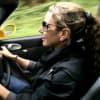
New Hyundai i30 Tourer wagon arrives
- Hyundai i30
- Hyundai I30 2009
- Hyundai I30 2010
- Hyundai I30 2012
- Hyundai I30 2013
- Hyundai I30 2014
- Hyundai I30 2011
- Hyundai I30 2015
- Hyundai News
- Hyundai Wagon Range
- Wagon
- Hyundai

Economic woe clouding Europe has delivered a silver lining for Australia with the arrival of the new Hyundai i30 Tourer.
The little wagon was designed and destined solely for Euro markets, but sliding sales there and a strong currency here gave the Aussie business case a leg-up and backflipped the previous decision not to send it to us.
The i30 is Hyundai's star success story, their top seller -- and the sixth most popular car in Australia last year. Rivals for it on the sales leaderboard are the Mazda3 in first place, Toyota's Corolla in third and the Holden Cruze in fifth -- and just a whisker ahead of the Hyundai.
But the i30 has a chance to leapfrog ahead this year, if the new wagon lends the hatch a hand by attracting extra buyers. Many of those will come from fleets that favoured the previously discontinued wagon, but with fresh looks and a sprinkle of extra equipment, it's going to lure private buyers too.
In Europe, wagons are often an upmarket choice, and that tendency has seeded the more premium approach of the i30 Tourer', which was designed in Germany and built in the Czech Republic.
Both Active and Elite spec get the classy grille seen only on the latter in the hatch, daytime running lights, speed limiter on the cruise control and smart 16-in alloys (and yes, a full-size spare) added to the already generous i30 fit-outs.
That means the Tourer Elite also scores the hatch's rear view camera, 7-in touchscreen satnav with live SUNA updates and other goodies. But both wagons also get multi-link rear suspension, rather than the hatch's cheaper torsion beam.
The Tourers share the i30 range's 94kW/260Nm 1.6-litre turbodiesel -- the Elite offers only that engine with a six-speed auto -- but the Tourer's petrol choice is the 98kW/163Nm 1.6-litre from the Veloster and Kia Rio, rather than the hatch's 1.8-litre (sacrificing 3kW and 15Nm with the change).
There's a rise of $2000 over the discontinued wagon and current hatch, with the newcomer starting in showrooms later this month at $22,990 for the petrol and $25,590 for the diesel in Active manual spec (the auto adds $2000) and topping out at $31,190 for the Elite.
Fuel misers might be philosophically attracted to the manual diesel's 4.6L/100km and petrol's 6.3L, but buying trends show most will then skip over it for the auto versions claiming 5.8L and 6.9L respectively.
Load-luggers will love the increased cargo space, with 528 litres -- 113 more than the previous wagon and 150 more than the hatch -- ballooning to 1642 with the rear seats flat-folded.
So... how does that stack up against that close leaderboard rival? The Holden Cruze wagon starts at $25,790 and is longer, wider and higher, but falls behind on 500 to 1478-litre cargo space -- and also on head and shoulder room.
The Hyundai will also gain some applause with European styling and build against the Korean origins of the Cruze wagon. It will be an interesting race to the sales finish line this year. Wagons ho!
This reporter is on Twitter: @KarlaPincott










Comments